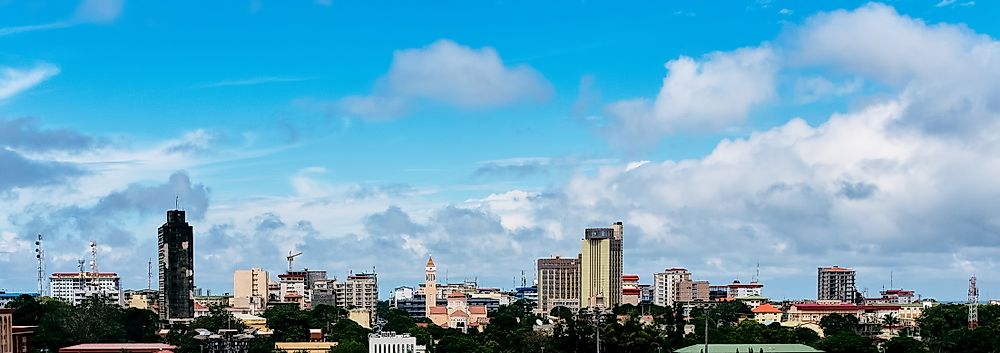What Are The Major Natural Resources Of Guinea?

Officially known as the Republic of Guinea, Guinea is a French-speaking country that is located in the western region of Africa. Previously known as French Guinea, the country is sometimes called Guinea-Conakry in order to differentiate it from other nations with similar names. The country has an area of about 94,918 square miles, which is mostly land. The nation is inhabited by a population of about 12.4 million according to estimates from 2016. The major natural resources of Guinea include agricultural land, mineral resources, tourist attractions, and water.
Agriculture
As is the case with most countries in Africa, Guinea relies heavily on agriculture. Consequently, it should not come as a surprise that about 84% of the population practices agriculture. In addition, the sector contributes around 20% of the nation’s GDP. Historically, the sector has endured fluctuations mainly due to illegal smuggling, which adversely affected the prices of exported foods such as cocoa. The sector also employs the heavy use of children aged between 5 and 14 who should be in school. An estimate from 2013 by the U.S. Department of Labor placed the percentage of children working in farms at a staggering 76.2%.
Despite all these problems, the country has a very high potential in agriculture. This potential is because of things like natural fertile soils, high amounts of rain, and suitable climatic conditions. The potential also exists in other kinds of agriculture such as fish farming and not just crop farming. Investors from other countries are unwilling to step in and make significant investments due to the poor infrastructure.
Some of the plants grown in the nation include rice, sweet potatoes, yams, and corn. Cash crops include the likes of bananas, pineapples, coffee, citrus fruits, and sugarcane. Among these plants, the most popular crop is rice, which is grown mainly in the flooded regions of the country. Despite a huge chunk of the population involved in the growth of the crop, it is not enough to meet the national needs. Imports from Asia usually supplement the local need.
Mining
The mining sector in the country has been present and has been developing ever since the country was still under the rule of the French. Some of the major minerals that the nation is endowed with include iron, diamond, bauxite, and gold. In 2010, the mining sector was responsible for around 17% of the nation’s GDP while the sector usually accounts for at least half of the country’s total exports. However, in recent years, the sector has had to endure controversies arising from blocked mines and the iron industry. Both of these issues have had a negative impact on their mining and sale. Aside from these recent issues, the country also faces long-term problems to do with widespread corruption and poor infrastructure.
Guinea is one of the global leading producers of bauxite. Estimates place the bauxite reserves of Guinea at a whopping 25 billion metric tons. This amount of reserve equates to almost half of the total bauxite reserve in the world. Aside from bauxite, Guinea is blessed with massive high-grade iron ore reserves that total at least 4 billion tons. Other significant, albeit undetermined amounts, mineral deposits include deposits of uranium, diamond, and gold. Oil deposits have also been discovered in parts of the nation although the exploitation of this natural resource was not deemed economically. Other small deposits include those of cement, nickel, manganese, and nickel.
Incredibly, the production of bauxite and alumina normally account for a huge portion (around 80%) of the nation’s foreign income. In terms of employment opportunities, the sector has been able to employ at least 10,000 people. Investors are also attracted to the mining sector as evidenced by the foreign companies (at least two dozen) operating in the nation.
The potential for diamond is estimated to stand at around 40 million carats. According to the Kimberley Process Certification Scheme, the nation’s production of about 266,800 carats in 2012 made Guinea the 13th largest producer of diamonds in the world. Looking at the gold deposits, most of them are located in the Lefa mine, which is one of the largest mines in Guinea. In 2011, Guinea managed to produce about 15,695 kilograms of gold.
Energy Production
In 2013, the national production of electricity stood at around 971 million kWh. Most of the electricity in the country (around 67.8% of the national demand) originates from fossil fuels. The remaining electricity is accounted for by hydroelectric power from the water resource in the nation. Estimates place the hydroelectric power production potential of the nation at a massive 19,300 GWh every year. Unfortunately, the lack of development means that only a small fraction of this potential is utilized.
The company responsible for producing and supplying electricity in Guinea is Electricité Nationale de Guinée. At the current production level, most parts of the country do not have access to electricity. Even the capital city, Conakry, gets less than 12 hours of electricity in a day. Most of the population, which does not have access to electricity, is forced to rely on biomass as the main source of fuel. According to the International Monetary Fund, more than 74% of the nation’s households rely on firewood for energy while 23% relies on charcoal.
Tourism
Guinea has some stunning and interesting tourist attractions and diverse geography that make the country a popular tourist destination. Some of the natural attractions include the magnificent waterfalls that are located in the Basse Guinee and Moyenne Guinee regions. Examples of these falls include the Soumba Cascade, the Kinkon Cascades (which have heights of up to 80 meters), and the Kambadaga falls (up to 100 meters).











